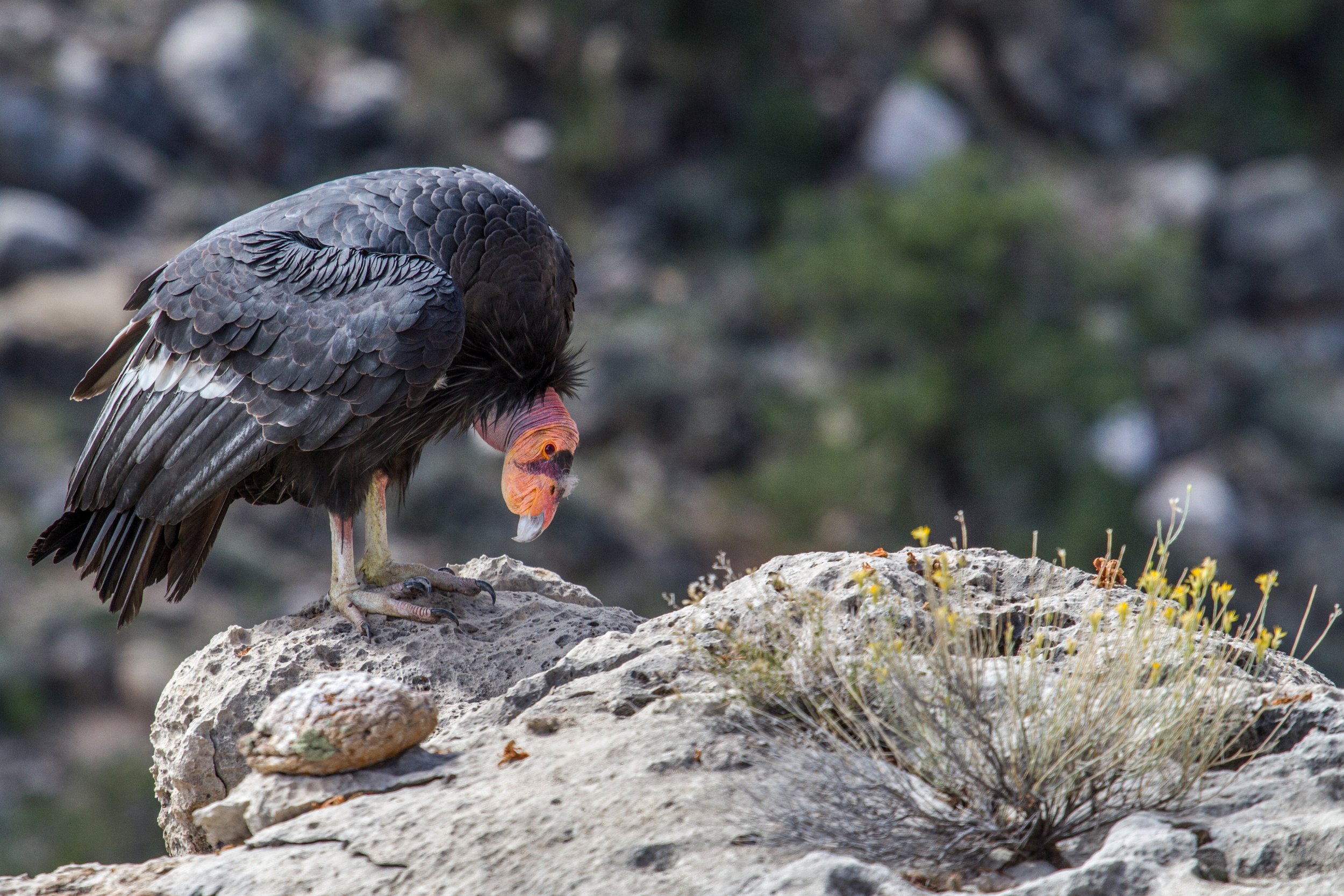
Condor Info
The California condor is a fascinating creature! Below is an introduction and be sure to visit the The Peregrine Fund’s website below to learn more.
The California condor (Gymnogyps californianus) is a New World vulture, belonging to the family Cathartidae. This species is the largest flying bird in North America, with a wingspan of up to 9.5 feet and weighing between17 and 24 pounds (USFWS 2013a). Males and females are similar in appearance. Adult condors are almost entirely black with prominent white underwings visible during flight. The heads and necks of adult birds are mostly bare and red or orange in color. Juvenile condors have mostly black, bare heads and mottled underwings. Adult plumage and coloration are attained at approximately 5 to 6 years of age (USFWS 2013a). Pair formation, courtship, and nest-site selection generally occur during the winter, and a single egg is produced between January and early April. Both male and female parents contribute to brood rearing. Young condors fledge from the nest between 5 and 7 months old, but often are not fully independent until after a year (USFWS 2013a).
California condors are gregarious birds, and may roost, feed, forage, or bathe in groups. Large concentrations of condors are generally uncommon but condors may congregate for short periods near waterbodies or at carcasses (Finkelstein et. al. 2020). California condors are obligate scavengers, depending primarily on large mammalian carcasses (Finkelstein et al 2020).
Current threats to the survival of California condors in the wild include lead poisoning, predation, and collision with anthropogenic structures (USFWS 1996). Due to its small population size, slow reproduction, and ongoing threats, this species is intensively managed by USFWS. Management of the southern California population involves captive breeding, releases, proffered feeding, and rigorous management and health monitoring of free-flying condors (USFWS 2020).
LEARN MORE:
The U.S. Fish & Wildlife Service’s California Condor Recovery Program and the work they do with this species:
Information on these unique birds can be found on The Peregrine Fund’s website:
REFERENCES:
Finkelstein, M., Z. Kuspa, N. F. Snyder, and N. J. Schmitt. 2020. California Condor (Gymnogyps californianus), version 1.0. In Birds of the World (P. G. Rodewald, Editor). Cornell Lab of Ornithology, Ithaca, NY, USA. https://doi.org/10.2173/bow.calcon.01. Accessed: April 12, 2021.
USFWS. 1996. Recovery Plan for the California Condor. April 1996. Available: https://ecos.fws.gov/docs/recovery_plan/960425.pdf. Accessed: April 12, 2021.
USFWS. 2013a. California Condor (Gymnogyps californianus). 5-Year Review: Summary and Evaluation. U.S. Fish and Wildlife Service Pacific Southwest Region. June 2013.
USFWS. 2020. California Condor Recovery Program 2020 Annual Population Status. 5pp.

